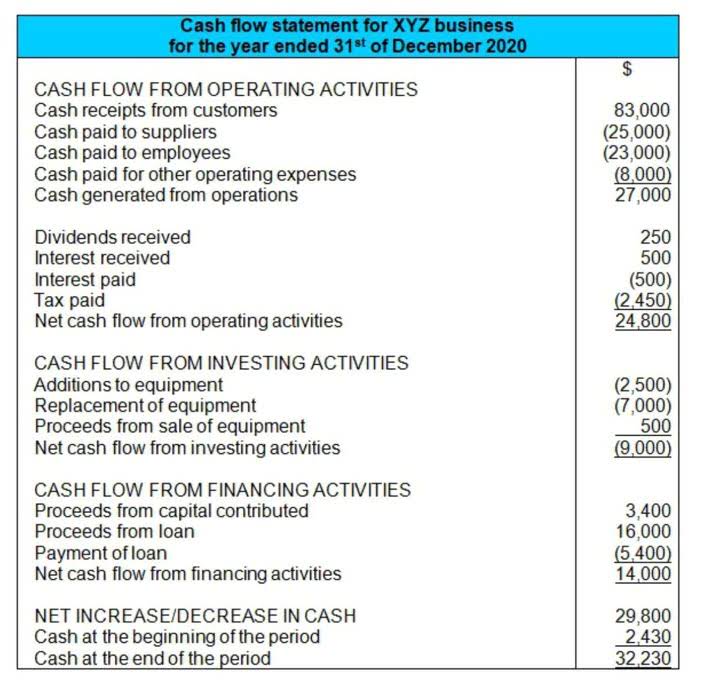
A report in 2023 found that Northern Californians had donated more than Southern California residents, according to an Orange County Register story. Palo Alto ZIP code 94301, known as “Professorville,” ranked second in the analysis and another ZIP code near Stanford University — — placed third, giving 12.9% of their incomes to charity. The counties of Marin, San Mateo, Santa Clara and Contra Costa consecutively topped the charts by taking up the first four spots, according to the ranking from financial technology company SmartAsset. The study “calculated how much people donate as a percentage of their net income and the proportion of people in each county who make charitable donations,” according to the company. Pilot is a provider of back-office services, including bookkeeping, controller services, and CFO services. Pilot is not a public accounting firm and does not provide services that would require a license to practice public accountancy.

Types of Contra Accounts for Revenues
Of course, you’ll also have to pay your employees’ wages, your rent, your utilities and other costs. Those are expenses, too, because, without them, you wouldn’t have had a store in which to sell the shoes and collect the revenue. The following are examples of commonly-used contra asset accounts you could create to better understand your business financials. However, it’s important to keep in mind that you can create any contra account you want to more clearly describe your business — this is not an exhaustive or definitive list. The list of asset accounts on your general ledger and balance sheet conveys the combined, potential value of all of the tangible and intangible items that your organization possesses. But in the real world, converting all of that potential into hard cash is highly unlikely, if not impossible.
What Is a Contra Account?
In the realm of accounting, contra revenue plays a significant role in accurately reflecting a company’s financial performance. It is a concept that may seem complex at first, but with a clear understanding, businesses can utilize contra revenue to provide a more accurate representation of their revenue streams. In this blog post, we will explore what contra revenue is, its purpose, how it affects financial statements, and how businesses can effectively use it.
How to Record a Contra Account
- They assess whether the company is accurately estimating and reporting sales returns, allowances, discounts, and rebates in accordance with relevant accounting standards.
- However, it’s important to keep in mind that you can create any contra account you want to more clearly describe your business — this is not an exhaustive or definitive list.
- A “discount,” in accounting terms, usually refers to a price reduction offered as an inducement to customers who pay their bills quickly, not to a “sale” price, which is simply incorporated into gross revenue.
- These deductions are a common part of doing business, especially if you are trying to retain customers by offering them discounts from the list prices of your goods and services.
- Embrace contra revenue as a tool for transparency and analysis, and leverage its insights to guide your business towards sustainable growth and success.
Contra accounts are usually linked to specific accounts on the balance sheet and are reported as subtractions from these accounts. In other words, contra accounts are used to reduce normal accounts on the balance sheet. Contra revenue affects the income statement by reducing gross sales, ultimately influencing the net sales figure. This, in turn, can impact profitability and provide a better picture of a business’s financial health. Contra revenue represents the deductions from gross sales, providing insight into net revenue.

Strategies to reduce contra revenue
Another type of contra account is known as “contra revenue,” which is used to adjust gross revenue to calculate net revenue, i.e. the “final” revenue figure listed on the income statement. Make sure you track each type of contra revenue account carefully to maintain precise records that can then inform your business decisions and help you spot trends or issues in sales processes, product quality, or pricing strategies. However, that $1.4 billion is used to reduce the balance of gross accounts receivable.
- For example, when your company borrows money, you would identify that debt in a Notes Payable account.
- This practice aids in gaining a clearer perspective on the distinctions between your gross and net revenue.
- The most common contra type, contra assets, records the loss in value of any asset accounts listed in your general ledger.
- When a customer returns a product, the transaction must be recorded in a way that accurately reflects the reversal of the original sale.
- Gross sales represent the total sales before any contra revenue adjustments, providing a raw figure of sales activity.
- Revenue refers to the total amount of income generated from your business operations, while sales refer to the amount of products or services sold.
- That’s because, as far as accounting is concerned, you haven’t really “spent” $20.
These less-frequent contra accounts come into play when you need to account for changes in the outstanding liabilities for your business. For example, when your company borrows money, you would identify that debt in a Notes Payable account. Furthermore, if you subsequently pay off that debt early and capture a discount, the contra liability account — Discount Notes Payable — would record those savings. Another common contra liability account is a Discount on Bonds Payable account used by businesses that issue their own bonds.
Presentation of Contra Accounts

The contra revenue account reflects the original amount, the discounted sale, and the resulting net sales for the company. When a contra asset account is first recorded in a journal entry, the offset is to an expense. For example, an increase in the form of a credit to allowance for doubtful accounts is also recorded as a debit to increase bad debt expense.
Double Entry Bookkeeping
It will debit Accounts Receivable for $100,000 and will credit Sales for $100,000. If a customer returns $500 of this merchandise, Company K will debit Sales Returns and Allowances for $500 and will credit Accounts Receivable for $500. Company K’s income statement will report the gross Sales of $100,000 minus the sales returns and allowances of $500 and the resulting net sales of $99,500. In conclusion, understanding contra revenue is crucial for small businesses in Singapore. Sales returns, discounts, and allowances all impact your gross revenue and should be recorded in a contra revenue account. By properly accounting for these deductions, you can accurately assess your business’s financial health and make informed decisions for future growth.
- Consider an asset account, where the values are listed as debits, and the account itself will present a positive total.
- If your business makes $100,000 in gross sales, say, and has $5,000 in total contra revenues from returns, allowances, and discounts, your net sales would be reported as $95,000.
- It’s important for businesses to monitor trade discounts to analyze their impact on sales volume and profitability.
- Discounts and allowances are strategic tools used by businesses to encourage sales, maintain customer loyalty, and manage inventory.
- Analyze sales patterns, customer behavior, and profitability metrics to inform your decisions.

